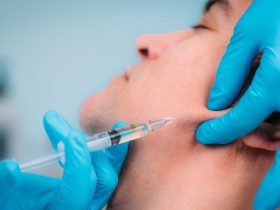Social media, online shopping, computer games – experts have observed an increase in patients with digital addiction since the pandemic. More and more older people are also affected.
Since the Corona pandemic, more and more adults over the age of 30 are visiting special outpatient clinics because of digital addictive behaviour. This is one of the topics at the German Congress for Psychosomatic Medicine and Psychotherapy, which ends today in Berlin.
Digital addictions in pandemic
Until now, this form of addiction was more common among younger people under 30. With the pandemic, however, the number of older sufferers has also increased. In the Clinic for Psychosomatic Medicine and Psychotherapy at Mainz University Medical Centre alone, about 25 percent more people sought help than in 2021, according to Klaus Wölfling, head of the outpatient clinic for gambling addiction in Mainz. Addiction researcher Hans-Jürgen Rumpf from the University of Lübeck also assumes that the number of people seeking help has increased due to the pandemic. There are no comprehensive studies yet, but there are some indications.
Those affected by digital addictions spend eight to ten hours a day chatting, using social networks, playing computer games, watching internet pornography or shopping online and neglect important areas of their lives. As a result, many are threatened with job loss, separation or debt.
More older people with addictive behaviour
As a result of the pandemic, not only the number of young people affected has increased, but also the number of people aged 30 to 67, says Wölfling. Addiction clinics report that for older people in particular, familiar structures have broken down and this void has been filled with social media. These are not yet reliable figures, but they are observable.
Wölfling describes the mechanisms of loneliness of older people similarly to those of youths and young adults. According to him, the resulting social gaps are filled by intensive use of social media. Those affected lose control over their own internet consumption and become dependent on the reward structures applied there, such as likes or comments.
Dopamine surges in MRI
Brain scans show how internet activity activates the brain’s reward system. Each Like causes the happiness hormone dopamine to be released. According to psychologist Wölfling, these dopamine surges are also visible in the MRI and are sought out again and again by those affected. In this way, a digital addiction can gradually develop, especially in older people.
New diagnosis key
The University of Lübeck has developed diagnostic criteria to identify internet-related disorders. Besides screen time, other criteria also play a role:
Withdrawal symptoms when prevented from using digital offers
Deception of others about the extent of use
Loss of interest in other hobbies or activities
jeopardising or losing relationships, a job or educational or professional opportunities.
“There must be at least five out of nine criteria fulfilled to speak of addiction,” explains expert Wölfling. “It is also very important to us that we don’t want to overdiagnose and conjure up a digital pandemic, so to speak.” In the meantime, video addiction and gambling addiction, both online on the internet and without internet use, have been included in the WHO’s ICD 11 diagnosis code as addictive diseases and are thus treated the same as cocaine or alcohol addiction. By the end of 2023, Germany also wants to apply the new diagnosis codes.
Differences in addictive behaviour
Wölfling states that people up to 45 years of age mainly used online role-playing games and first-person shooters, whereas people over 45 years of age tended to look for social contact on the internet. Men tended to use online pornography, computer games or games of chance more often. Among women, social networks and messenger services are more widespread besides gambling.
In order to deal with their addictive behaviour, those affected should seek professional help. Contact points can be addiction counselling centres and medical or psychological institutions. According to Wölfling, abstinence-oriented therapy is usually used for digital addictions. Those affected do not have to completely give up the internet, but only the content and applications that are connected to the addiction.











Leave a Reply